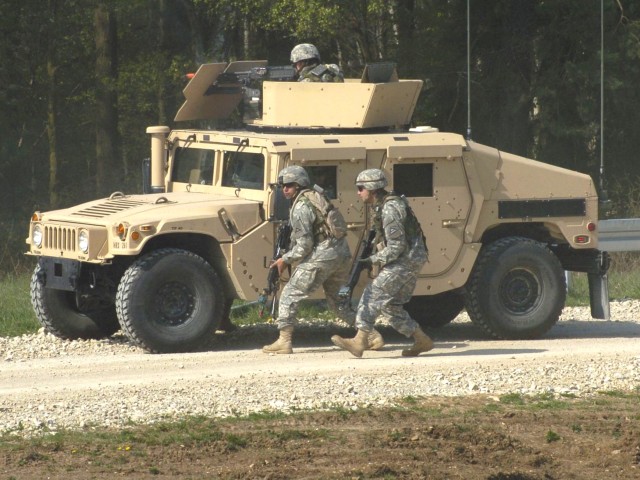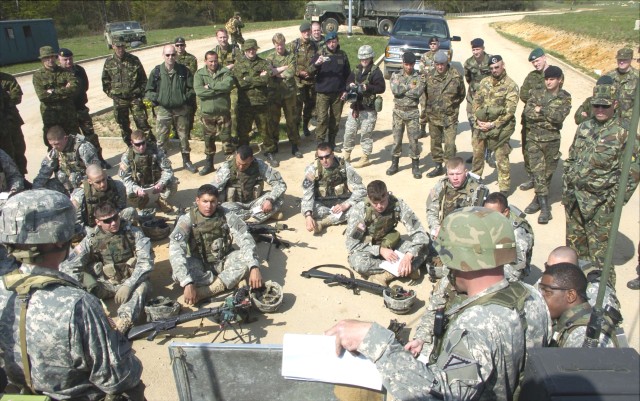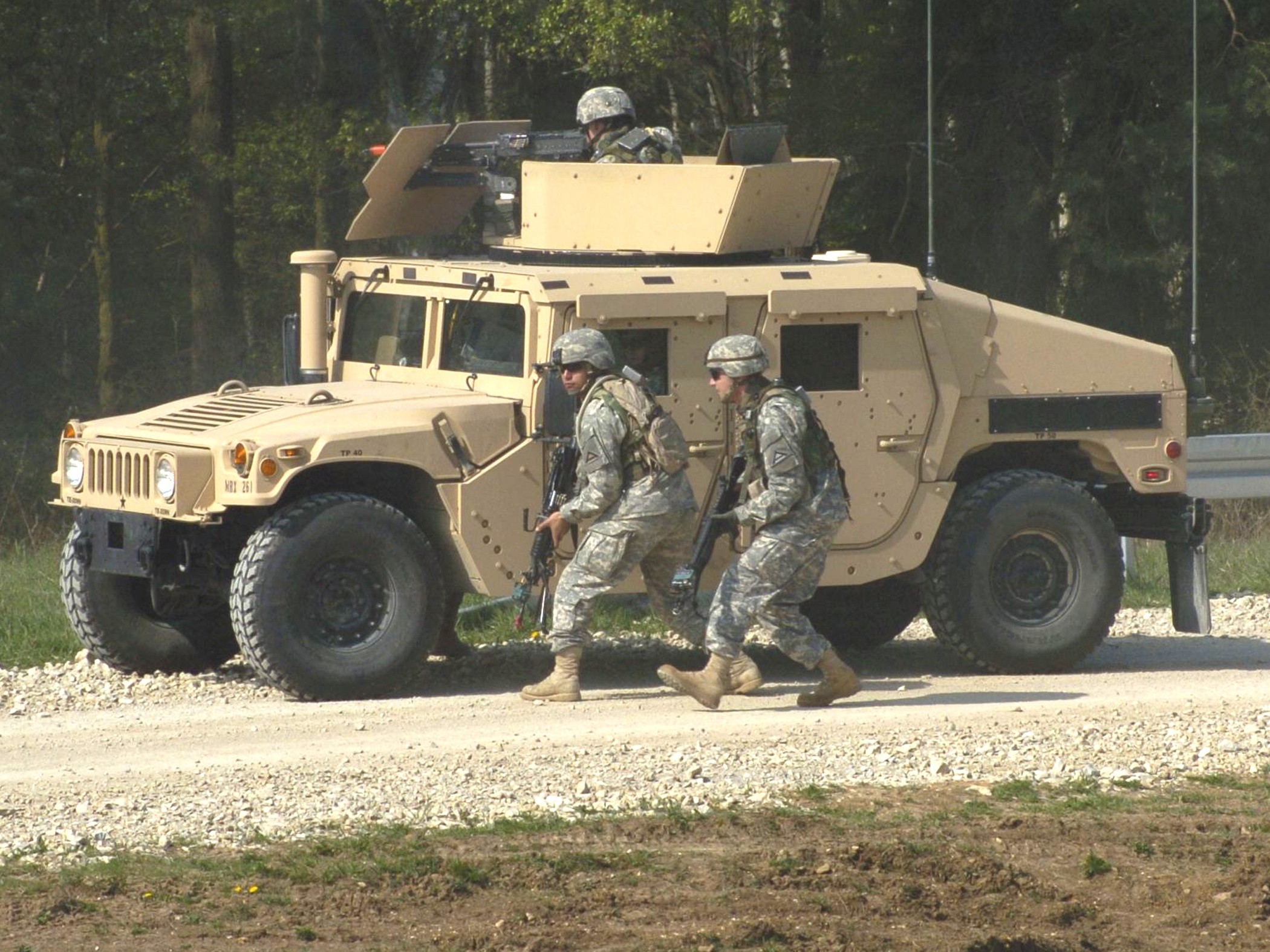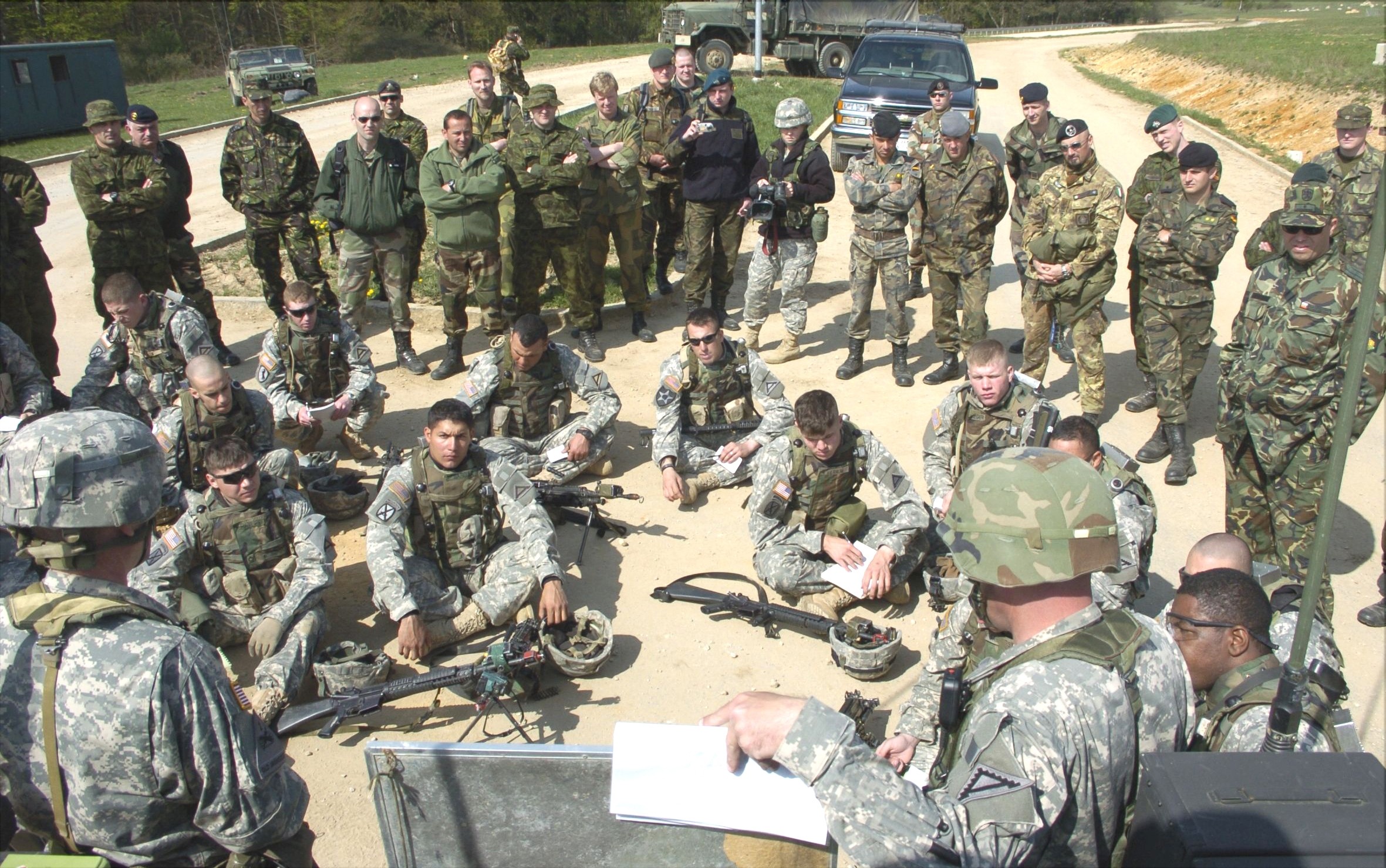Hohenfels, Germany (Army News Service, April 23, 2007) - Soldiers at the Joint Multinational Readiness Center in Hoehenfels shared their knowledge of how to react to improvised explosive devices during convoy operations with 40 Soldiers from 12 NATO countries during a recent NATO train-the-trainer counter-IED exercise.
According to Lt. Col. Rodney Butler, NATO counter-IED training coordinator, Allied Land Component Command in Heidelberg, the 10-day training course was designed to teach coalition forces how to train Soldiers preparing for deployment to Afghanistan how to deal with the ongoing threat of IEDs. Since the course began last summer, about 150 students have received the training.
"The intent of this training is for them to see a U.S. counter-IED training model and develop their own national counter-IED training events," said Lt. Col. Butler. "In the first week, the students get an understanding of the operational environment - Afghanistan in this case. They are then instructed on how the enemy is currently using the IED."
Following the overview, students learn what NATO is doing doctrinally in regard to counter-IED training, and given instruction in conducting convoys and recognizing IEDs, said Lt. Col. Butler.
NATO troops watched Friday as Soldiers from the 1st Battalion, 4th Infantry Regiment, ran through three training scenarios and reacted to various IED situations.
During the first exercise the platoon conducted a patrol and an IED was detonated in their area.
The second scenario involved the platoon setting up a traffic control point. A vehicle containing an IED was driven through the point. If the Soldiers failed to identify it as such, the explosive device would be detonated.
In the last stage, the convoy encountered an explosive during a routine patrol followed by a complex ambush by enemy forces.
Capt. Dan Young, an engineer observer/controller for the Joint Multinational Readiness Center has been instrumental in development of the course curriculum.
"We start with the big picture of deployment training and in that lens, where IED awareness fits in," Capt. Young said.
He said the big picture is then worked down into a situational exercise.
"We show them the different systems we used to replicate IEDs and the different tools we use," said Capt. Young. "We show them how we do it so they can take the bits and pieces they can incorporate into their training and use it."
The NATO students say they found the course enlightening. First Lt. Juozas Girdouskas of the Iron Wolf Brigade from Lithuania just finished the course.
"It has been useful for us to learn the planning operations for each mission and how to design these exercises," 1st Lt. Giroudouskas said. "I hope to use the subjects I have learned during this course during training with my Soldiers when I return home. With this training, I feel we will be able to achieve tremendous results."
The next train-the-trainer course is slated for this summer.
(Spc. Jerry Wilson writes for the 7th Army Joint Multinational Training Command Public Affairs Office.)




Social Sharing